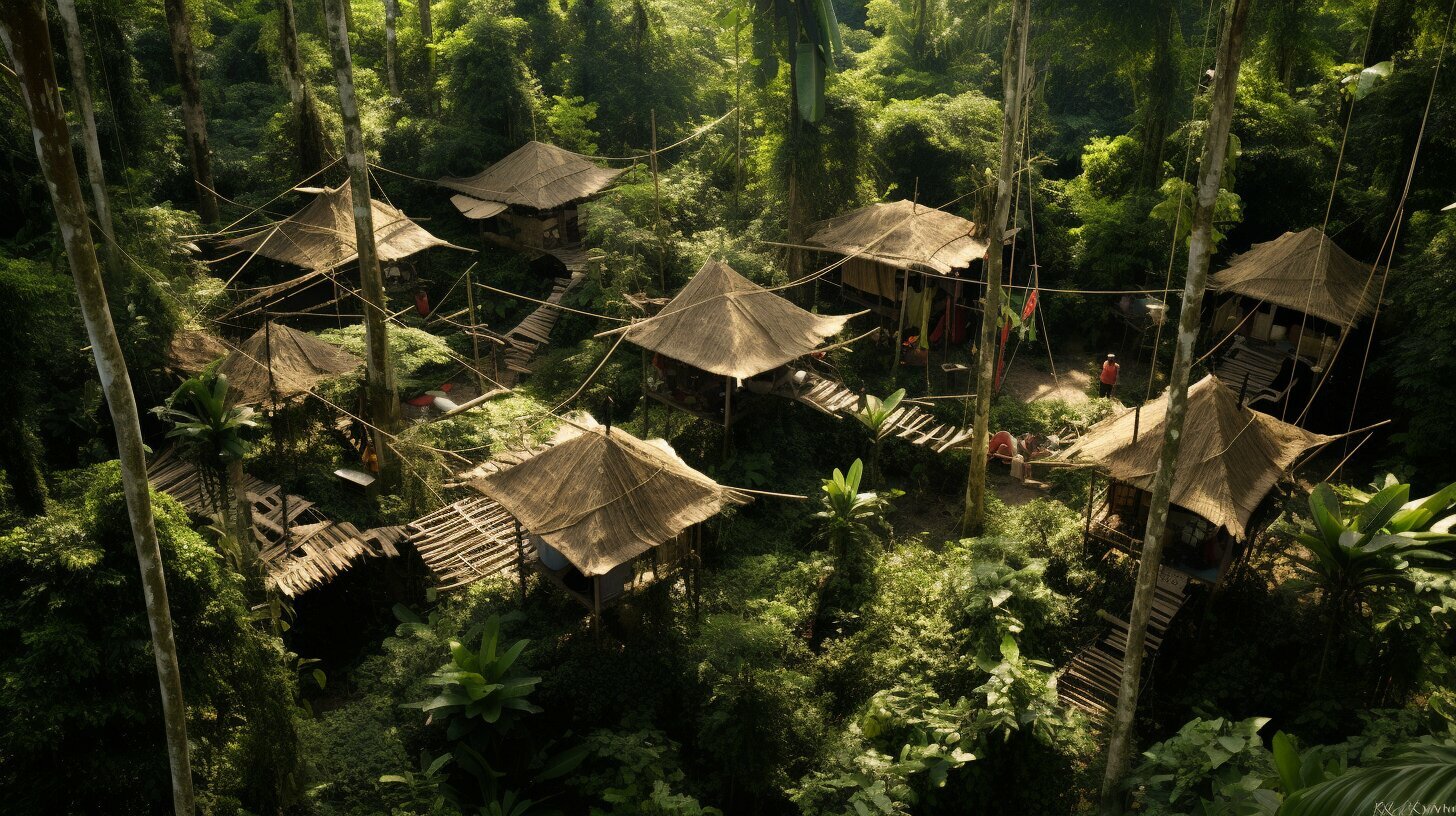Are you planning an outdoor adventure? Whether it’s a hike through the mountains or a camping trip in the woods, it’s essential to have the necessary skills to survive in the wilderness. At times, unforeseen circumstances can leave one stranded without access to modern amenities, and it’s vital to be prepared. This comprehensive guide will equip you with the skills necessary to thrive in the outdoors and handle any emergency situation that may arise.
Key Takeaways
- Wilderness survival skills are crucial for anyone planning an outdoor adventure.
- Being prepared with the right gear and knowledge can make all the difference in emergency situations.
- This guide will provide practical advice and tips to help you master survival skills and navigate the wilderness with confidence.
Understanding Wilderness Survival
If you’re planning an outdoor adventure, it’s essential to understand the basics of wilderness survival. Whether you’re planning a day trip or a multi-day excursion, the wilderness can be full of unexpected challenges and dangers. Knowing how to prepare for and survive these challenges can make all the difference.
Outdoor survival requires a combination of knowledge, skills, and preparation. By understanding the basics of wilderness survival, you can increase your chances of staying safe and healthy while enjoying the great outdoors.
Disclosure: When you buy through links on our site, we may earn an affiliate commission.
Outdoor Survival Tips
Before you head out into the wilderness, there are some things you should keep in mind to stay safe:
- Study your route and destination extensively
- Plan your trip accordingly, and always let someone know where you’re going and when you expect to return
- Stay hydrated and nourished by drinking water frequently and packing nutrient-rich snacks
- Dress appropriately for the weather and terrain. Pack extra layers, waterproof clothing, and sturdy footwear.
- Carry essential gear such as a map and compass, flashlight, whistle and a first aid kit with you
These outdoor survival tips can help you prepare for the challenges that the wilderness can bring. However, to truly thrive in the outdoors, there are specific knowledge, skills, and techniques that you must master.
Let’s begin exploring them in detail in the following sections of the article.
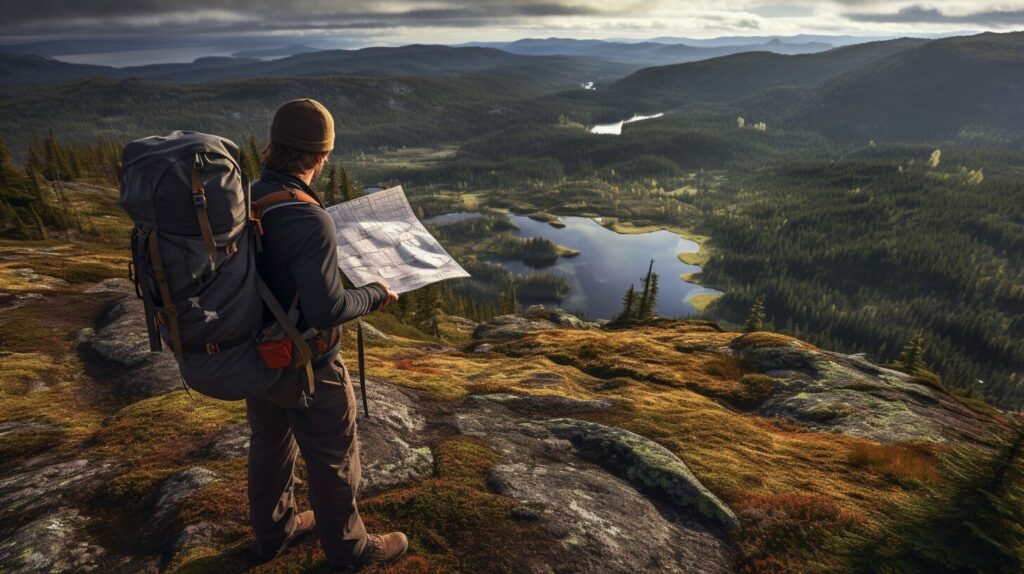
Essential Wilderness Survival Skills
When it comes to wilderness survival, there are several key skills you need to master to increase your chances of survival. These skills include navigation, fire making, water purification, shelter building, and food procurement. With these skills, you can turn even the most challenging wilderness environment into a survivable one.
Navigation
Navigation is a critical skill for any wilderness survivalist. To navigate successfully in the wilderness, you need to be able to use a compass and map, as well as natural signs such as the sun or stars to orient yourself. You should also learn how to read the terrain and use landmarks to guide your way. By mastering navigation, you can avoid getting lost and find your way to safety.
Fire Making
Building a fire is crucial for staying warm, cooking food, and signalling for help. To build a fire, you need to know how to select the right kind of wood, use a fire starter, and tend to the flame as it grows. You should also learn how to start a fire in wet or windy conditions as well as in cold weather.
Water Purification
Water is essential for survival, but in the wilderness, it may not be safe to drink. You must know how to purify water and make it potable. You can purify water by boiling it, using water purification tablets, or a filter. You should also know how to find water sources in the wilderness.
Shelter Building
When in the wilderness, you need to protect yourself from the elements and stay warm. Building a shelter is an essential skill for this purpose. You should learn how to choose a suitable location, select the right materials, and construct a shelter that provides insulation and protection from the weather.
Food Procurement
Food procurement is critical in the wilderness, where food sources may be scarce. You should learn how to catch fish, trap animals, and forage for edible plants. You should also know how to prepare and cook food in the wilderness.
By mastering these essential wilderness survival skills, you can increase your chances of surviving in the wilderness. Practice these skills regularly to stay sharp and prepared for any situation that may arise.
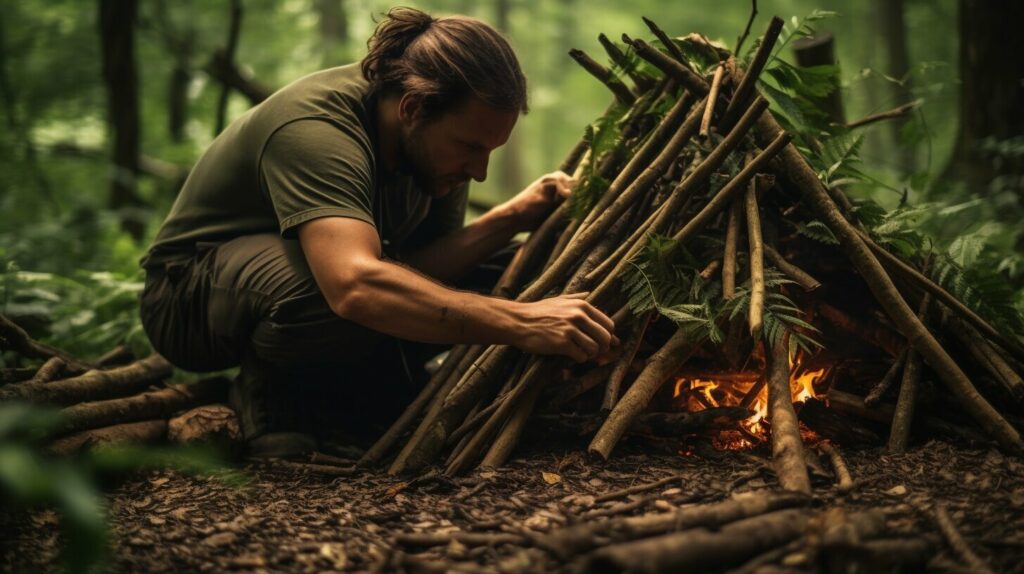
The Importance of Emergency Preparedness
When you’re out in the wilderness, it’s crucial to be prepared for any emergency that may come your way. Whether it’s a sudden storm, injury, or other unexpected event, having the right gear and supplies can make all the difference in staying safe and comfortable. To make the most of your wilderness experience, it’s important to invest in quality wilderness survival gear and take the time to learn basic emergency preparedness skills.
Having a well-stocked first aid kit should be a top priority when venturing out into the wilderness. Your kit should include essentials like bandages, antiseptic wipes, gauze pads, and medical tape. You may also want to consider carrying a compact emergency blanket or shelter in case you are stuck outside overnight. A whistle and handheld mirror can also be useful in signaling for help in an emergency situation.
Another important aspect of emergency preparedness is having the right wilderness survival gear. This includes appropriate clothing, footwear, and backpacks that can withstand the rigors of the outdoors. You’ll also want to invest in high-quality cooking equipment, navigation tools like maps and compasses, and durable shelter materials such as tarps and ropes.
When selecting wilderness survival gear, it’s important to consider the specific environment you’ll be in and the possible challenges you may face. For example, if you’re planning on hiking in a wet climate, you’ll want to invest in waterproof gear that can keep you dry and warm. Similarly, if you’ll be camping in bear country, you’ll need to take extra precautions to store your food and avoid attracting animals.
Overall, the key to successful wilderness survival is being well-prepared for any situation that may come your way. By investing in quality wilderness survival gear, learning basic emergency preparedness skills, and taking the time to plan for potential scenarios, you can ensure a safe and enjoyable outdoor experience.
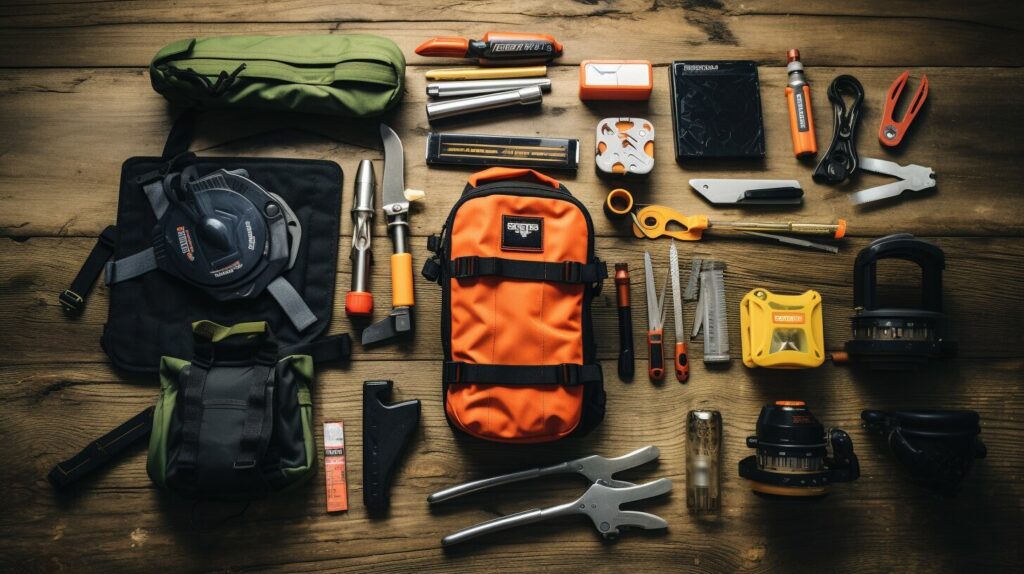
Water Sourcing and Purification
When it comes to surviving in the wilderness, water is essential. Knowing how to find and purify water sources is a critical bushcraft skill that can mean the difference between life and death.
In the wilderness, sources of water can include streams, rivers, lakes, and even rainwater. To find water, look for signs such as vegetation, animal tracks, and bird activity, which can indicate the presence of nearby water sources.
However, it is important to purify any water you collect in the wild to prevent the risk of waterborne illnesses. Boiling water is the most effective method of water purification. But if you don’t have access to fire, other methods such as using water purification tablets and UV purifiers can also be used.
Another option is to create a basic water filtration system using natural materials such as sand, gravel, and charcoal. This can remove most of the larger impurities, but it is not a guarantee of complete purification.
Remember, safe drinking water is crucial for survival, so be sure to prioritize finding and purifying water sources in any wilderness situation.
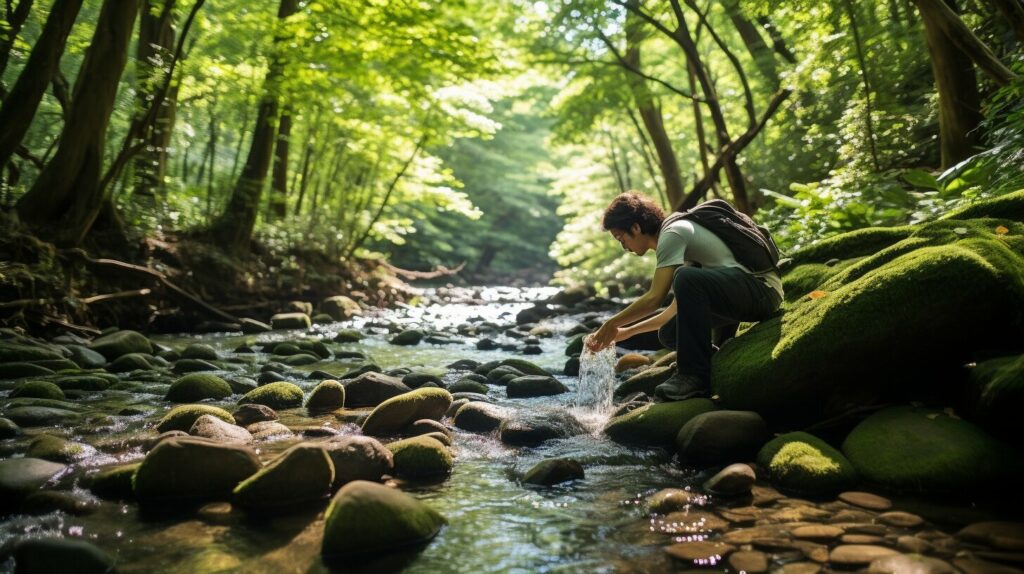
Mastering Wilderness First Aid
When you’re out in the wilderness, injuries and accidents can happen unexpectedly, making it essential to have solid first aid skills. Being prepared with the right tools and knowledge can make all the difference in an emergency situation.
The first step in mastering wilderness first aid is to learn how to assess injuries and determine the appropriate treatment. Whether it’s a cut, sprain, or broken bone, understanding the severity of the injury is crucial to providing the right care.
Once you’ve assessed the injury, the next step is to properly treat the wound. This may involve cleaning the wound, applying pressure to stop bleeding, or immobilizing the affected area. It is important to have the necessary tools on hand, such as bandages, gauze, and a splint.
In addition to addressing physical injuries, it’s also important to be prepared for common medical emergencies that can occur in the wilderness. Knowing how to manage dehydration, heat exhaustion, and hypothermia can be life-saving in an emergency situation.
Practice makes perfect when it comes to wilderness first aid. Consider taking a first aid certification course to further enhance your skills and knowledge. Always have a well-stocked first aid kit on hand, and make sure to refresh your skills regularly.
“Wilderness first aid can be life-saving in an emergency situation.”
The Art of Bushcraft
If you want to take your wilderness survival skills to the next level, consider exploring the world of bushcraft. This ancient skill involves using the natural resources around you to thrive in the wilderness.
Bushcraft is all about learning to work in harmony with your environment and gaining expertise in wilderness survival techniques. It involves foraging for food, tracking, building natural shelters, and making tools from natural materials.
One key benefit of bushcraft is that it allows you to develop a deeper connection with nature. By learning to use the resources around you, you gain a greater appreciation for the natural world and can become more attuned to your environment.
To get started with bushcraft, begin by exploring the natural resources in your area. Learn about the local flora and fauna, and experiment with different techniques for using them to your advantage.
You can practice your bushcraft skills by going on camping trips or wilderness expeditions where you can test your knowledge and skills. By practicing regularly, you can hone your bushcraft abilities and become more confident in your ability to survive in the wild.
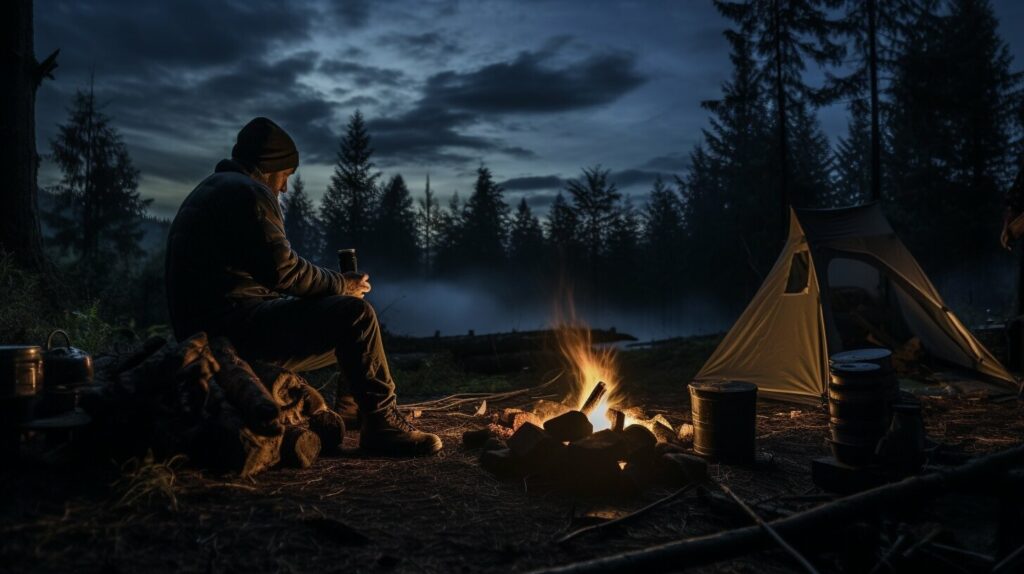
Remember, bushcraft is not about being a survivalist or going against nature. It’s about being prepared, resourceful, and respectful of the natural world around you. By mastering bushcraft techniques, you can enhance your wilderness survival skills and gain a deeper understanding and appreciation of the world we live in.
Mastering Survival Shelter Building
Building a shelter is one of the crucial skills for wilderness survival. When you find yourself stranded in the wild, your shelter can provide you with protection against harsh weather conditions and keep you safe from wildlife. To increase your chances of survival, it’s essential to learn how to build a survival shelter using the available materials.
There are different types of survival shelters you can build depending on your environment and the materials available. For example, a debris shelter is an easy-to-make shelter that utilizes natural materials such as branches, leaves, and bark. It provides excellent insulation and can keep you warm even in extreme weather conditions.
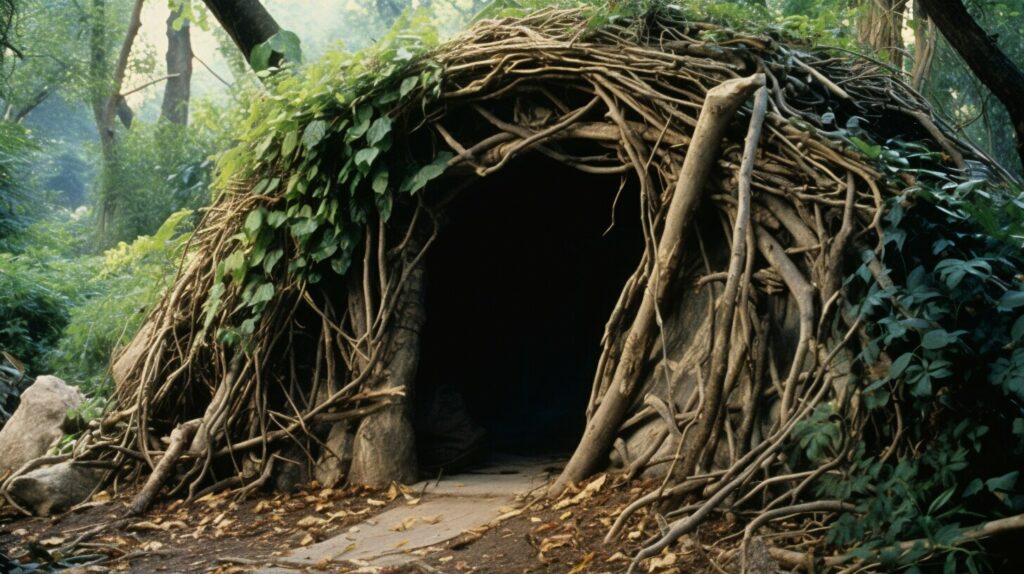
To construct a debris shelter, you need to start by finding a suitable location and ensure the ground is relatively flat. Use large branches to create the frame of the shelter and cover them with smaller branches to create a lattice. Fill the gaps between the branches with leaves, grass, and other debris to provide insulation.
Another survival shelter option is a tarp shelter. It’s a quick and easy shelter to construct, especially if you have a tarp or a poncho in your survival kit. You can set up a tarp shelter using a rope tied to two trees or using a frame made of branches, and then tie the tarp to the frame.
Regardless of the type of shelter you choose to build, it’s essential to keep it well-ventilated and avoid sleeping directly on the ground. Sleeping on the ground can lead to heat loss and exposure to dampness, increasing the risk of hypothermia.
Learning how to build a survival shelter is just one of the many skills you need to master for wilderness survival. Keep practicing and improving your skills, and remember to prepare for emergencies by carrying essential gear and supplies.
Choosing the Right Wilderness Survival Gear
When it comes to venturing into the wilderness, having the right gear can make all the difference. Not only can proper equipment increase your chances of survival, but it can also make your experience more comfortable and enjoyable. Here are some essential items to consider when selecting your wilderness survival gear.
Clothing and Footwear
Choose clothing that is suitable for the environment you will be in. Consider weather conditions, temperature, and moisture. Dressing in layers can help regulate your body temperature and keep you comfortable. Waterproof and breathable materials are also a good option to keep you dry and warm. As for footwear, invest in sturdy, comfortable boots with good traction to prevent slips and falls.
Backpacks and Gear Bags
When selecting a backpack or gear bag, consider the size and weight of your equipment. Look for a pack that has multiple compartments to keep your gear organized and easily accessible. Adjustable straps and a comfortable back support system are also important for long hikes and heavy loads.
Cooking Equipment
Depending on the length of your trip, you may need to bring cooking equipment. A portable stove, fuel, and cookware can allow you to prepare warm meals and hot drinks. Don’t forget to pack utensils, plates, and cups.
Navigation Tools
Getting lost in the wilderness can be dangerous, so it’s important to have the right navigation tools. A map and compass are essential, but a GPS device can also be helpful. Make sure you know how to use these tools before heading out into the wilderness.
Emergency Supplies
Accidents happen, and it’s crucial to be prepared for emergencies. A first aid kit, signaling devices, and a fire starter kit should be included in your gear. A multi-tool can also come in handy for a variety of situations.
Choosing the right wilderness survival gear is critical to your safety and success in the great outdoors. By keeping these essential items in mind, you can ensure that you’re properly equipped for your next wilderness adventure. Remember to prioritize durability, functionality, and portability when selecting your gear, and always be prepared for the unexpected. With the right gear and knowledge, you can confidently tackle any wilderness challenge.
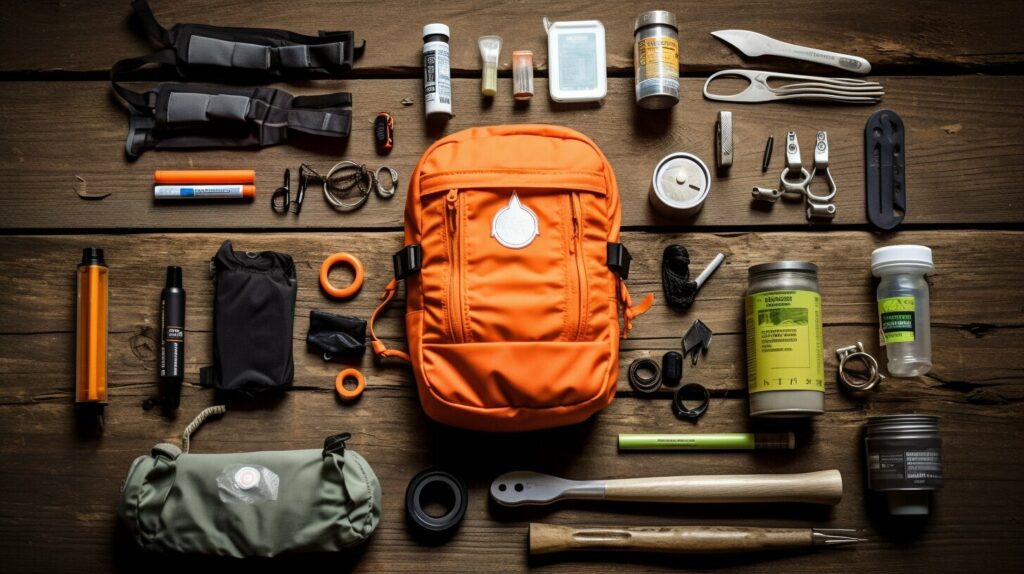
Foraging Edible Plants
When you’re in the wilderness, food is essential for survival. Luckily, nature provides a variety of edible plants that you can forage and use to supplement your diet. As part of your bushcraft skills, learning to identify edible plants can be a lifesaving skill.
However, it’s important to remember that not all plants are safe to eat. Some are poisonous and can cause serious harm or death. Therefore, it is crucial to learn to differentiate between edible and poisonous plants. A good rule of thumb is to avoid any plant that you are unsure of.
Here are some of the most common edible plants in the wild:
| Plant | Identification Characteristics |
|---|---|
| Dandelion | Bright yellow flowers, toothed leaves, and hollow stems |
| Wild berries | Berries are ripe, plump, and juicy |
| Wild garlic | Long, narrow leaves with a strong garlic odor |
| Cattails | Tall, green leaves with brown, cylindrical flower spikes |
Remember, foraging edible plants should only be done in emergency situations. It is not recommended to solely rely on foraging as a food source, as it can lead to malnutrition. Instead, focus on packing adequate food supplies for your trip.
Navigating the Wild with Confidence
The ability to navigate through unfamiliar terrain is an essential wilderness survival skill. Whether you’re trekking in the mountains or exploring dense forests, knowing how to find your way is crucial.
There are several techniques you can use for navigation in the wilderness. One of the most important is map and compass navigation. Make sure you have a good quality topographical map of the area you will be exploring and know how to read it. Learn how to use a compass to determine your direction of travel and to orient your map.
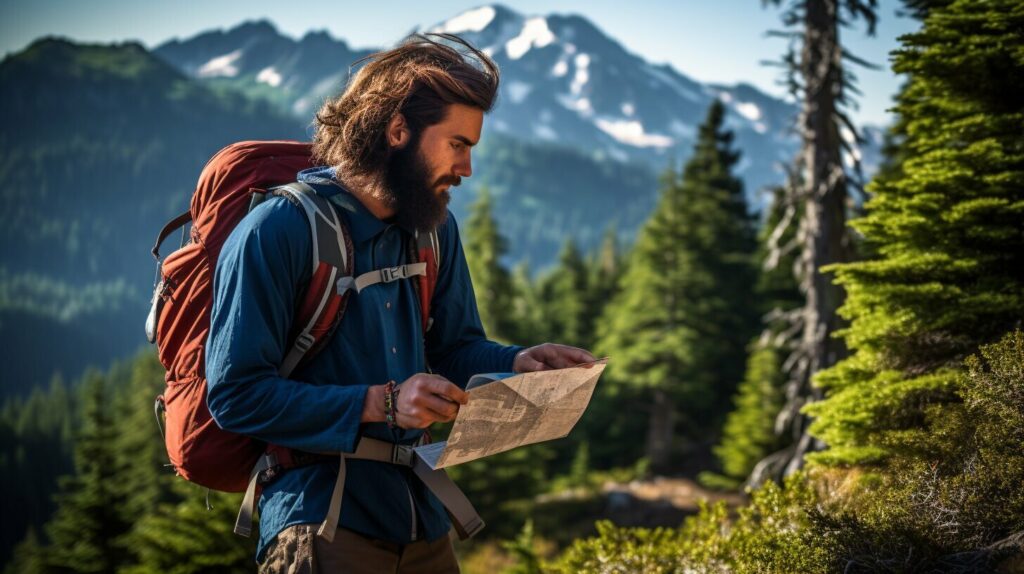
Natural navigation is another skill worth mastering. This involves using natural elements such as the sun, stars, and wind to guide you. For example, if you know the time of day and your latitude, you can use the position of the sun to determine your direction of travel. Similarly, the position of the North Star can help you find true north.
Orienteering is also a useful skill to have. It involves using a map and compass to navigate through a series of checkpoints in a set amount of time. Orienteering courses can be found in many wilderness areas and provide an excellent opportunity to practice your navigation skills.
Whichever technique you choose, make sure to practice your navigation skills regularly. Start with short hikes in familiar areas and gradually progress to more challenging terrain. By mastering navigation, you’ll be able to explore the wilderness with confidence and stay safe in even the most challenging conditions.
Outdoor Cooking
One of the most exciting aspects of wilderness survival is outdoor cooking. Cooking in the wilderness requires a different approach than cooking in a kitchen. You have to source ingredients, prepare them, and cook them over an open fire. It can be challenging, but it’s also incredibly rewarding. Here are some tips to elevate your outdoor cooking game:
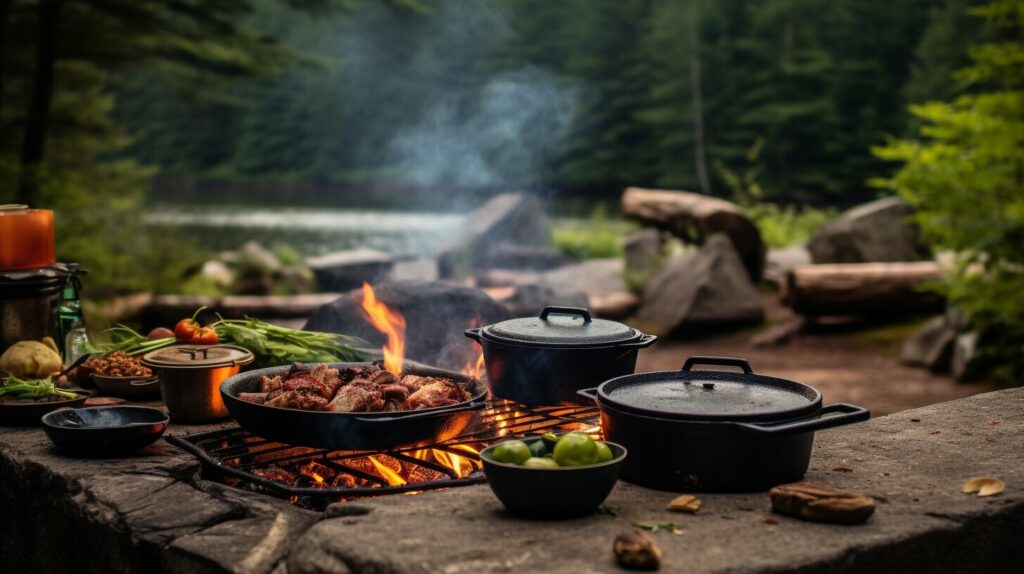
Campfire Cooking
Campfire cooking is a classic outdoor cooking method that involves cooking food over an open flame. To get started, build a fire and wait until it has burned down to hot coals. You can then cook directly on the coals or use a grill grate to cook food. Be sure to bring along a cast iron skillet or Dutch oven for versatile cooking options. You can cook anything from bacon and eggs to stews and chili in a Dutch oven.
Dutch Oven Cooking
Dutch oven cooking is a popular outdoor cooking method that involves cooking food in a cast iron pot over hot coals. Dutch ovens are versatile and can be used to cook everything from bread and cakes to stews and roasts. To use a Dutch oven, coat the inside with oil, add your ingredients, and place it over the hot coals. Be sure to use a pair of heat-resistant gloves or tongs to move the pot around.
Improvised Cooking Setups
If you don’t have access to a grill or Dutch oven, you can always create your own improvised cooking setup. You can cook food on a stick over a campfire, use a flat rock as a griddle, or even create a DIY oven out of a cardboard box and aluminum foil. The possibilities are endless, and creativity is key in the wild.
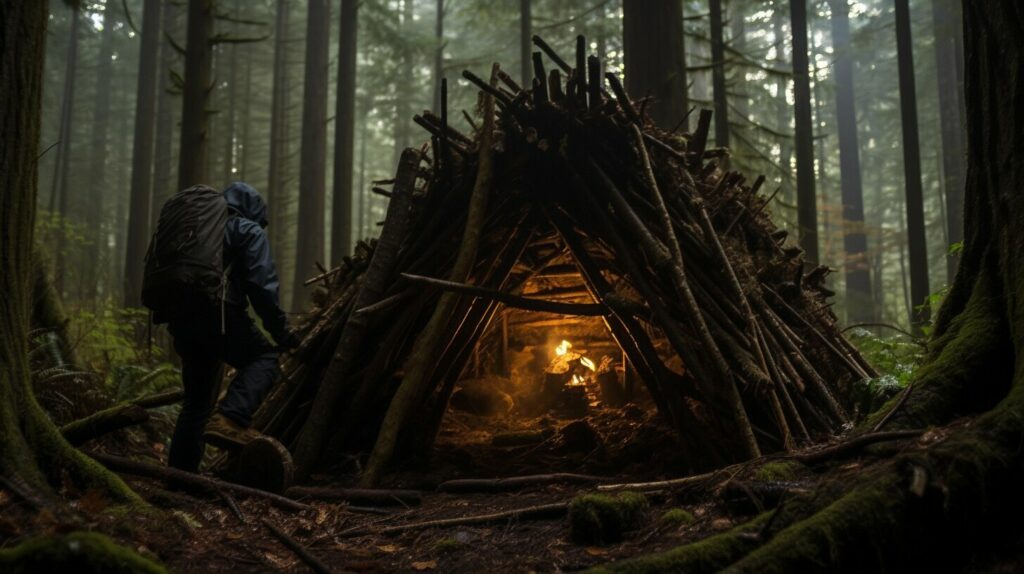
The Importance of Mastering Wilderness Survival Skills
By reading this article, you have taken a crucial step towards mastering wilderness survival skills. Whether you are an experienced outdoorsman or a novice explorer, having the necessary skills to survive in the wilderness is essential for your safety and well-being.
Remember, the wilderness can be unpredictable, and being prepared with the right skills and gear can mean the difference between life and death. The importance of wilderness survival cannot be overstated. It is not just about learning how to start a fire or build a shelter; it is about developing a mindset that enables you to remain calm, focused, and capable in any situation.
By mastering wilderness survival skills, you will be able to:
- Survive in a range of different environments, from deserts to mountains to forests and beyond.
- Effectively manage emergencies and unexpected situations in the wilderness.
- Explore the beauty of nature with confidence.
- Gain a sense of self-reliance and independence that can be empowering.
The skills required for wilderness survival are diverse and cover a range of areas, from first aid to navigation to shelter building. However, with practice and determination, anyone can learn these skills and become a proficient wilderness survivor.
Remember, the wilderness is both beautiful and unforgiving. With the right skills and mindset, you can thrive in this environment and enjoy all the incredible experiences it has to offer. So, start your wilderness survival journey today and continue honing your skills – you never know when they might come in handy.
FAQ
Q: What is wilderness survival?
A: Wilderness survival refers to the skills and knowledge necessary to survive and thrive in outdoor environments, particularly in remote and challenging wilderness settings.
Q: Why is wilderness survival important?
A: Wilderness survival is important because it equips individuals with the necessary skills to navigate and survive in the wilderness. It allows them to be prepared for unexpected emergencies and increases their self-reliance in outdoor environments.
Q: What are some essential wilderness survival skills?
A: Some essential wilderness survival skills include navigation, fire making, water purification, shelter building, and food procurement. These skills enable individuals to meet their basic needs and increase their chances of survival in the wilderness.
Q: How can I prepare for emergencies in the wilderness?
A: To prepare for emergencies in the wilderness, it is important to have essential gear and supplies such as first aid kits, communication devices, and survival tools. Additionally, acquiring knowledge of wilderness first aid and emergency protocols can greatly enhance preparedness.
Q: What is bushcraft?
A: Bushcraft is the practice of using natural resources and traditional skills to survive and thrive in the wilderness. It involves techniques such as foraging for food, building natural shelters, and making tools from natural materials.
Q: How do I build an effective survival shelter?
A: Building an effective survival shelter involves selecting a suitable location, choosing an appropriate shelter design, and utilizing available materials. It is important to consider factors such as insulation, protection from the elements, and comfort.
Q: What gear do I need for wilderness survival?
A: Essential gear for wilderness survival includes appropriate clothing, footwear, backpacks, cooking equipment, and navigation tools. It is important to choose gear that is durable, lightweight, and suitable for the specific environment.
Q: How can I navigate through the wilderness?
A: Navigating through the wilderness requires skills such as using maps and compasses, orienteering, and natural navigation methods. Developing these skills will enable you to confidently explore unfamiliar terrain and find your way in the wilderness.


